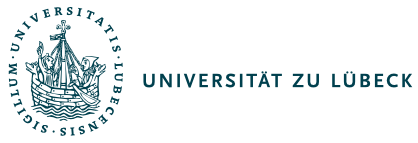Duration:
1 Semester | Turnus of offer:
each winter semester | Credit points:
6 |
Course of studies, specific field and terms: - Certificate in Artificial Intelligence (compulsory), Artificial Intelligence, 1st semester
- Master Entrepreneurship in Digital Technologies 2020 (advanced module), technology field computer science, Arbitrary semester
- Master Computer Science 2019 (basic module), technical computer science, 1st or 2nd semester
- Master Medical Informatics 2019 (optional subject), technical computer science, 1st or 2nd semester
- Master Robotics and Autonomous Systems 2019 (optional subject), Elective, 1st or 2nd semester
- Master IT-Security 2019 (basic module), technical computer science, 1st or 2nd semester
- Master Medical Informatics 2014 (basic module), computer science, 1st or 2nd semester
- Master Entrepreneurship in Digital Technologies 2014 (basic module), technology field computer science, 1st or 2nd semester
- Master Computer Science 2014 (basic module), technical computer science, 1st or 2nd semester
|
Classes and lectures: - Parallel Computer Systems (exercise, 2 SWS)
- Parallel Computer Systems (lecture, 2 SWS)
| Workload: - 100 Hours private studies
- 60 Hours in-classroom work
- 20 Hours exam preparation
| |
Contents of teaching: | - Motivation and limitations for parallel processing
- Parallel computing models
- Taxonomy of parallel computers
- Multi/manycore-systems
- Graphic Processing Units (GPUs)
- OpenCL
- Specification languages
- Hardware architectures
- System management of many-core systems
| |
Qualification-goals/Competencies: - Students are able to characterize different parallel computing architectures.
- They are able to explain models of parallel computing.
- They are able to make use of common programming interfaces for parallel computing systems.
- They are able to judge which kind of parallel computing system is best suited for a dedicated problem and how many cores should be used.
- They are able to evaluate the pros and cons of different hardware architectures.
- They are able to write programs for parallel computing systems under considerations of the underlying hardware architecture.
- They are able to compare methods for dynamic voltage and frequency scaling (DVFS) for manycore systems.
|
Grading through: |
Responsible for this module: Teachers: |
Literature: - G. Bengel, C. Baun, M. Kunze, K. U. Stucky: Masterkurs Parallele und Verteilte Systeme - Vieweg + Teubner, 2008
- M. Dubois, M. Annavaram, P. Stenström: Parallel Computer Organization and Design - University Press 2012
- B. R. Gaster, L. Howes, D. R. Kaeli, P. Mistry, D. Schaa: Heterogeneous Computing with OpenCL - Elsevier/Morgan Kaufman 2013
- B. Wilkinson; M. Allen: Parallel Programming - Englewood Cliffs: Pearson 2005
- J. Jeffers, J. Reinders: Intel Xeon Phi Coprozessor High-Performance Programming - Elsevier/Morgan Kaufman 2013
- D. A. Patterson, J. L. Hennessy: Computer Organization and Design - Morgan Kaufmann, 2013
|
Language: |
Notes:Admission requirements for taking the module:
- None
Admission requirements for participation in module examination(s):
- Successful completion of exercise assignments as specified at the beginning of the semester
Module Exam(s):
- CS4170-L1: Parallel Computer Systems, oral exam, 100% of the module grade |
Letzte Änderung: 2.9.2021 |



















für die Ukraine